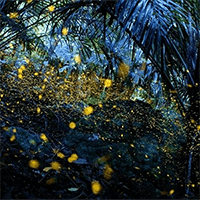- Age 20~Age 75
- 2~3 hours
- 11:30
① Learn about sake brewing. Learn about the history of sake and the differences in how it is made. ② Drink and compare three types of sake: sweet, medium-dry, and dry. Enjoy seasonal mini-sized dishes. ③Try new sake cocktails and more. Try new ways to enjoy sake, such as cocktails based on sake ④ Lunch Finally, for lunch, try sake lees-based ``keema curry'' or ``mapo tofu bowl.'' Approximately 2 hours lunch time Please apply for 2 or more people. Due to the arrangement of ingredients (fish), cancellations cannot be made from 4 days in advance.
- Age 10~Age 60
- 3~4 hours
- 09:00
Enjoy traditional Japanese culture at Ryusenji Temple - Urasenke Matcha Tea Ceremony and Buddhist Sermon In this program, you can experience traditional Japanese culture to your heart's content in the calm space of Ryusenji Temple. After renting a kimono and learning how to put it on, you can experience how to make Urasenke-style matcha tea, and finally listen to a Buddhist sermon in Japanese and English. Experience flow: 9:00 Choose a kimono and try on your kimono Choose a kimono and have a professional staff member help you put it on. After getting dressed, it's time for a commemorative photo. Wear a beautiful kimono, take photos, and feel the tradition of Japan. 11:00 Urasenke Matcha Tea Ceremony Experience the traditional Urasenke matcha tea ceremony. Learn the spirit of Japanese tea ceremony by making and tasting matcha in a seiza position. You can also try making matcha yourself. 11:45 Buddhist Sermon You can learn the Buddhist teachings of Ryusenji Temple through a 15-minute sermon in English. You can feel the deep wisdom of Buddhism and peace of mind. 12:00 Q&A After the experience, if you have any questions, the monks will be happy to answer them. You can learn more about Buddhist teachings and culture.
- Age 10~Age 80
- 2~3 hours
- 10:00
This is a half-day sightseeing course that visits the historic Chozenji Temple in Takehara City, Hiroshima Prefecture, Aki's Little Kyoto. This is a plan that includes a taxi meeting at Takehara Station. The tour runs every Tuesday and Wednesday. After arriving at Chozenji Temple grounds, you will be welcomed with a Nembutsu prayer and a welcome drink by the chief priest, and then tour the Ishiyama Battle Memorial Hall within the grounds with commentary from the chief priest. Here, the flag of the Ishiyama Battle Army and the list of those killed in battle at Fort Amagasaki during the Battle of Ishiyama are preserved. This flag was used during the ``Battle of Ishiyama'' (1570-1580), a battle between Oda Nobunaga and his followers at Honganji Temple.At the request of the third chief priest Enzai, his followers, mainly members of the Fujiwara clan, organized Kihata-gumi, and along with the Mori army, they formed the Kihata-gumi. After setting sail and going to support Ishiyama, we will enjoy copying sutras in a vault overlooking a Japanese garden with the motif of ``heart.'' Afterwards, enjoy copying sutras in front of a beautiful Japanese garden. Sutra copying is a form of meditation. Meditation time will be a time to heal your everyday stress. Please enjoy authentic Chozenji Buddhist cuisine along with the beautiful garden and furniture. This is a special cuisine and space that can only be enjoyed here. ~Flow of the day~ 10:00 Gather at JR Takehara Station. Move to Chozenji. Sutra copying experience and visit to the Ishiyama Battle Memorial Museum, guided lunch at 11:30 AM Shojin Kaiseki cuisine while looking at the magnificent folding screen and Japanese garden After this course, you will have free time. We recommend a free stroll through the Takehara Old Townscape Preservation District. Takehara City (Hiroshima Prefecture) Townscape Preservation District, known as the Japan Heritage ``Takehara Old Townscape Preservation District'' and ``Aki's Little Kyoto'', has been designated as one of the top 100 cityscapes, and was also designated as a Japan Heritage Site in 2019. Ta. Takehara is said to have first been cultivated as a manor land for Shimogamo Shrine in Kyoto during the Heian period under the Private Property Law of Konta Eiten. During the Muromachi period, Mori Motonari's third son Takakage (who was adopted by the Kobayakawa family and became Takakage Kobayakawa) spent his childhood there. Takakage was one of the people who received the ``Three Arrows' teachings'' from Motonari and supported the Mori clan system. Later, in the late Edo period, it developed through salt fields and sake brewing, and it is said that it boasted an 80% share of Hiroshima prefecture's salt production at the time. There are three sake breweries: Taketsuru Sake Brewery, Fujii Sake Brewery, and Nakao Jozo. Masataka Taketsuru, the founder of Nikka Whiskey, known as the ``father of Japanese whisky,'' is from Takehara. Taketsuru Sake Brewery, Masataka's birthplace, still operates in the townscape preservation district to this day. Around this time when salt and sake were developing, Rai Sanyo, a Confucian scholar and author of ``Japanese Foreign History,'' which had a great influence on the patriots at the end of the Edo period, was active. The former home of Sanyo's grandfather, Kiyoshi Yoriyoshi, is located in the townscape preservation district. (Excerpt from the Japan Historical Travel Association) At the annual Takehara Longing Road, the town is beautifully illuminated with candlelight and bamboo lanterns set in the townscape preservation district. The atmosphere of the old house leaking through the lattice door is also very atmospheric, giving you the illusion of having traveled back in time.
- Age 10~Age 50
- 3~4 hours
- 10:00
"Enjoy the scenery of the UNESCO World Heritage Shirakami-Sanchi" Walk the mountains of Noshiro in full pilgrimage attire with Noen Haruharu, a guide from Ryusenji Temple! You can hear about history and faith from your guide, and about trees and flowers from Noen Haruharu. Experience Buddhism by walking through the mountain scenery of the four seasons. Pick seasonal wild vegetables, cook them yourself, and eat them. Enjoy seasonal wild vegetables with rice balls, pickles, and miso soup. At the end, there is a 15-minute Buddhist talk in English. ~Experience flow~ 9:00 Mountain hiking Content changes depending on the season Pick wild vegetables Take a break at the peak and drink Noen Haruharu's herbal tea Heart Sutra reading in the hall (reading sutras together) 12:00 Return to Ryusenji Temple Cook wild vegetables yourself Don't worry, we will prepare extra if there is not much to pick. Lunch is rice balls with wild vegetables, miso soup, and smoked daikon radish while looking at the Shirakami Mountains. You can listen to a 15-minute talk on Buddhism in English from the head priest. Until 13:00 Q&A We will answer any questions you may have.
最近チェックしたプラン
Please wait a moment
![[Taito Ward, Tokyo] Learn about sake!の画像](https://img.activityjapan.com/10/50672/10000005067201_atFOJjl6_3.webp?version=1694481607)
![[Akita, Noshiro] "Enjoy the scenery of the UNESCO World Heritage Site Shirakami-Sanchi" at the temple Ryusenji Temple with kimono rental and authentic matcha tea ceremonyの画像](https://img.activityjapan.com/10/56354/10000005635401_HPGOPfHa_3.JPG?version=1728771002)
![[Hiroshima/Takehara City] [Meal and taxi included plan] Aki's Little Kyoto "Chozenji and History" Have a special time with beautiful temples and delicious vegetarian cuisine!の画像](https://img.activityjapan.com/10/45708/10000004570801_zupYFKe4_3.JPG?version=1702712583)








